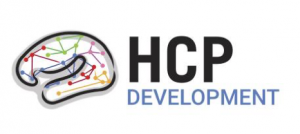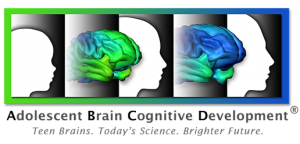Adolescent Brain Cognitive Development (ABCD) Study
The Adolescent Brain Cognitive Development (ABCD) Study is the largest long-term study of brain development and child health in the United States. The National Institutes of Health (NIH) funded leading researchers in the fields of adolescent development and neuroscience to conduct this ambitious project. The ABCD Research Consortium has invited nearly 12,000 children ages 9-10 to participate in the study at 21 research sites across the country. Researchers will track their biological and behavioral development through adolescence into young adulthood.
Drs. Bill Iacono and Monica Luciana, both professors in the Department of Psychology, lead the ABCD study at the University of Minnesota. Dr. Iacono and his colleagues at the Minnesota Center for Twin and Family Research specialize in the study of behavioral and brain differences between twins. The inclusion of twins greatly enhances our ability to separate the contributions of genetics and experience to developmental outcomes. The University of Minnesota is one of three data collection sites that are emphasizing the collection of twin data. Our laboratory supports the ABCD project through personnel training and the implementation of functional magnetic resonance imaging (fMRI) data collection. Please visit the ABCD Study website for more information about the multisite consortium.
Data available for download through the ABCD Data Repository through the National Institute of Mental Health Data Archive (NDA).
Brain Development Following Adolescent Alcohol Exposure
Adolescence is a period of life during which individuals are highly sensitive to the addictive effects of alcohol. This project uses behavioral and neuroimaging methods to investigate the relationship between adolescent alcohol exposure and brain development. The central question is whether alcohol consumption during adolescence causes changes in the brain that make it more likely that an individual will continue to drink, or whether some adolescents are more likely to experiment with alcohol because of the way their brains have already developed. This research, conducted in collaboration with Drs. Bill Iacono and Steve Malone and their colleagues at the Minnesota Center for Twin and Family Research, looks at behavioral differences between twins at different points in time, in conjunction with MRI data collected in adulthood, to assess differences in brain structure and function related to drinking activity. The participation of fraternal and identical twins is critical because it allows us to use a statistical method known as co-twin control, in which the effects of shared genetics can be modeled to better estimate the effects of experiences that are not shared, such as drinking versus not drinking. For example, among identical twins, any observed differences between them cannot be attributed to differences in genetic endowment. Instead, they must be due to differential genetic expression, which is presumably a consequence of differing life experiences between the two twins.
Data collection for this project has finished, with 1165 individuals having participated. Data post-processing and analysis are ongoing.
Lifespan Human Connectome Project: Development (HCP-D)
We are excited to be one of four research teams who work on the Lifespan Human Connectome Project Development (HCP-D) Study. The HCP-D study is a four-year, multi-site project that is funded by the National Institute of Health.
The HCP-D Study will enroll 1,300+ healthy children, adolescents, and young adults (ages 5-21) to discover how different parts of a child’s brain are connected and how these connections (the “connectome”) change as the brain develops. Ultimately, the HCP-D Study aims to collect information that parents, educators, and health professionals can use to enhance the well-being of our children. For more information about the HCP-D Study, please visit the HCP Development Study website.
Data available for download through the National Institute of Mental Health Data Archive (NDA); see instructions for download here.

Impact of BDNF Genotype and Early Adversity on Brain Development
The experience of stress, particularly during the early years of life are associated with altered developmental outcomes. In collaboration with colleagues at the University of Minnesota and the Sackler institute we conducted a study that assessed learning, attention, and brain development in internationally adopted youth, which provides a good model of time-limited early life stress. Specifically, the project used behavioral, neuroimaging, and genetic measures to test the hypothesis that the Vall66Met polymorphism of the BDNF gene moderates the impact of early institutional/orphanage rearing on the structural and functional development of brain systems including the hippocampus, amygdala, and prefrontal cortex. A comparison group of Minnesota youth not internationally adopted also participated in the study.
Data collection for this project has finished. Data processing and analysis are ongoing.
Mount Hope Resilience Study
Our group has the unique opportunity to investigate the neural mechanisms of risk and resilience in a rich longitudinal dataset collected by our collaborators, Dr. Dante Cicchetti and Drs. Sheree Toth and Fred Rogosch from the Mount Hope Family Center at the University of Rochester, NY. The sample is comprised of individuals from a high-risk, low-SES background (n=120), half of whom have a documented history of child maltreatment. This dataset includes longitudinal behavioral and psychopathology data, as well as MRI brain data from young adulthood. Specifically, we are looking at structural brain data as well as functional brain activation during rest, risk and reward processing, cognitive conflict, and emotion processing. Our work so far has shown that history of child maltreatment is related to hippocampus-amygdala connectivity during an emotion-processing task, whereas resilient adult outcomes (indexed by success on adult developmental tasks, e.g., education attainment, job level and performance, strength of relationships), regardless of threat-related early adversity, is linked to frontolimbic efficiency.
Data collection for this project has finished. Data processing and analysis are ongoing.


